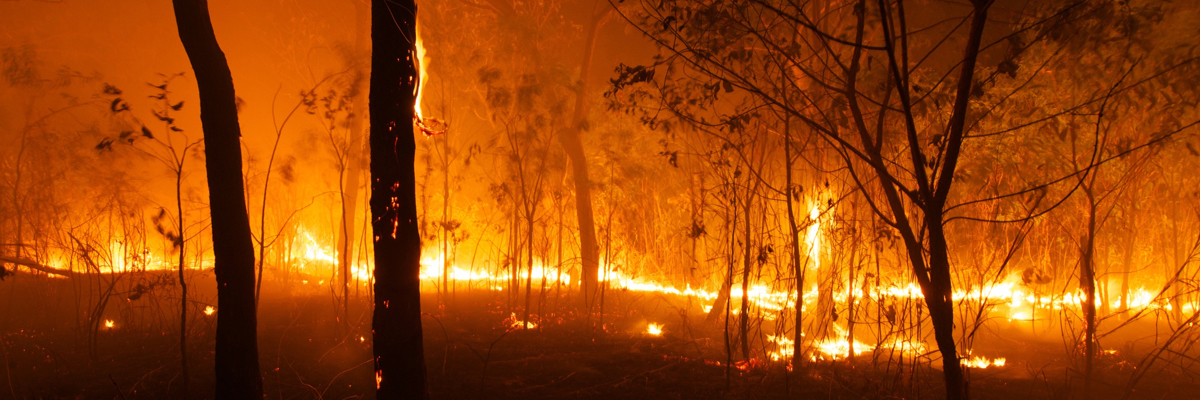The Relevance of Bushfire Administration in Fire Protection
In the world of fire protection, the significance of effective bushfire monitoring can not be downplayed. As areas globally come to grips with raising circumstances of wildfires, the aggressive approach to stop and mitigating these all-natural disasters via critical bushfire administration techniques has actually emerged as a crucial aspect. Past the immediate threat to human life and property, the interplay between bushfire administration and environmental conservation, community involvement, and climate modification postures intricate obstacles that demand extensive solutions.
Significance of Proactive Bushfire Prevention
Aggressive bushfire avoidance methods are crucial in minimizing the devastating influences of wildfires on neighborhoods and ecological communities. By taking preventative steps before a bushfire takes place, the dangers related to these natural calamities can be substantially lowered. One essential element of aggressive bushfire avoidance is gas management. This involves minimizing the quantity of flammable product, such as dead greenery and dry fallen leaves, that can serve as gas for fires. Fuel monitoring techniques consist of prescribed burns, where controlled fires are intentionally lit to minimize the build-up of combustible material.
Educating the public on fire security methods and promoting community awareness about the importance of bushfire avoidance are important components of positive strategies. Eventually, proactive bushfire avoidance plays a significant function in protecting areas and ecological communities from the destructive influences of wildfires.
Duty of Neighborhood Engagement in Fire Security
Involving the community in fire security initiatives is indispensable to enhancing the efficiency of aggressive bushfire prevention methods. Community interaction plays an important role in fostering a collective understanding of the dangers positioned by bushfires and the importance of preparedness measures. By involving local homeowners, authorities can distribute crucial information ablaze safety methods, emptying treatments, and early warning systems, empowering individuals to take proactive actions to guard their properties and lives.
By cultivating a society of readiness and partnership, areas can enhance their ability to respond efficiently to bushfire emergencies, lessening the effect on buildings and lives. Eventually, community engagement is a cornerstone of extensive fire defense approaches, stressing the significance of cumulative activity in securing susceptible areas from the risk of bushfires.
Importance of Wild Animals Conservation in Bushfire Administration
Conservation of wildlife plays a crucial function in reliable bushfire administration strategies, making sure the protection of diverse ecosystems and biodiversity in fire-prone areas. Wild animals conservation is vital as it adds to the total strength of environments, aiding in their ability to endure and recoup from the impact of bushfires. By conserving habitats and securing different species, the natural balance within these ecosystems is maintained, which is essential for their long-term wellness and sustainability.
Additionally, wildlife conservation also helps in decreasing the risk and strength of bushfires. Healthy ecological communities with well-preserved wild animals populations can serve as all-natural firebreaks, reducing down the spread of fires and limiting their devastating potential (BAL Report). Specific animal species, like tunneling pets or birds that spread out seeds, play distinct duties in helping or stopping fires in the post-fire regeneration of environments
Integrating wild animals preservation into bushfire management methods is not only important for guarding biodiversity however also for promoting the total health and strength of communities in the face of increasing fire hazards.
Advantages of Strategic Gas Reduction Programs
Strategically carrying out fuel reduction programs is necessary in alleviating the threat and influence of bushfires in fire-prone areas. These programs include regulated burning, mechanical clearing, and other approaches to decrease the amount of combustible greenery offered to sustain wildfires. By tactically decreasing fuel loads in key areas, such as near household neighborhoods or important infrastructure, the intensity and spread of bushfires can be substantially decreased.
Among the main benefits of fuel decrease programs is the improvement of general fire resilience in a community. By producing tactical fuel breaks and minimizing the continuity of plant life, these programs aid to disrupt the course of a bushfire, making it easier for firefighters to contain and snuff out the blaze. Furthermore, gas reduction programs can secure biodiversity by stopping exceedingly extreme fires that can devastate habitats and intimidate wildlife populaces.
Moreover, these programs can additionally secure human lives and residential property by lowering the risk of disastrous fires that present a substantial danger to communities. Eventually, strategic gas reduction programs play a vital duty in aggressive bushfire monitoring and cultivating a much safer atmosphere for both individuals and nature.
Effect of Environment Modification on Bushfire Threat

Greater temperatures lead to drier greenery, click to read more making it more navigate to these guys susceptible to ignition. Reduced rains in particular areas extends dry spell conditions, even more increasing the flammability of the landscape. Additionally, the transforming environment has altered wind patterns and weather, causing more unpredictable fire behavior and fast fire spread.
As the environment continues to alter, the regularity and strength of bushfires are anticipated to climb, requiring a proactive and flexible method to bushfire monitoring. Methods need to evolve to represent the altering threat landscape, including environment projections and taking into consideration lasting resilience in fire management planning. Attending to the effect of climate adjustment on bushfire risk is essential in creating reliable approaches to protect lives, building, and the setting.
Verdict
In final thought, proactive bushfire prevention, area involvement, wild animals preservation, calculated fuel reduction programs, and factor to consider of environment change are crucial other components in efficient fire defense. By implementing these methods, we can better take care of bushfire threats and protect both human lives and the atmosphere. BAL Report. It is necessary that stakeholders function with each other to focus on these steps to reduce the terrible effect of bushfires on environments and communities

As the climate proceeds to alter, the regularity and strength of bushfires are expected to increase, requiring a proactive and flexible approach to bushfire administration.In final thought, positive bushfire avoidance, neighborhood engagement, wildlife preservation, tactical gas reduction programs, and factor to consider of environment modification are vital parts in effective fire security.